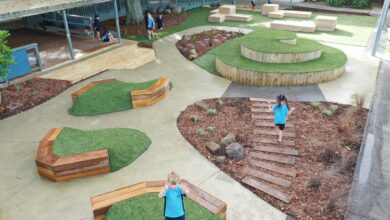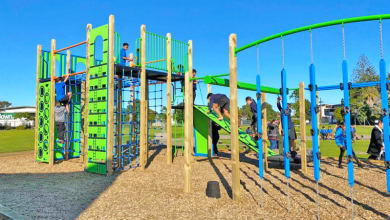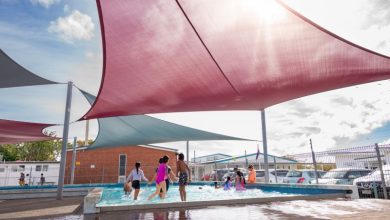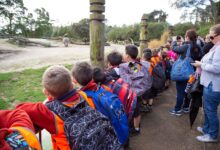All-weather shade solutions create year-round usable spaces
Melanoma cases are projected to skyrocket by 50 percent over the next 18 years, according to a 2022 study by JAMA Dermatology.
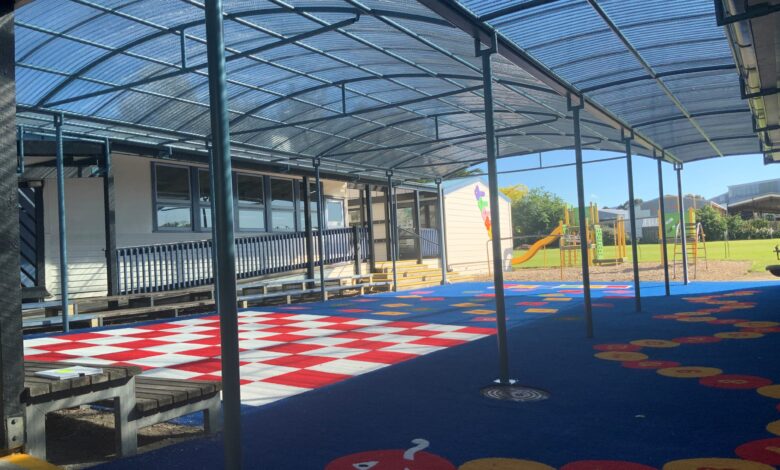
This is dangerous news for Aotearoa New Zealand, which the study singled out as having the highest mortality rate for melanoma in the world.
For children, shade protection at school is a critical tool for skin cancer prevention. For schools then, particularly following the long hot summer Aotearoa just experienced, the UV risks of outdoor play and learning should be on the forefront of decision-making right now.
Even on overcast days, the dangers of exposure to harmful UV rays are well-documented. In addition, sun hours take their toll not only on the skin, but on focus, stamina, and longer-term wellbeing; for instance, students can become lethargic and restless in the heat, and glare can also impair vision for students and teachers returning to the classroom after play or lunchtime.
Learning outside? Need to consider structural shade solutions
The benefits to effective outdoor learning spaces are many, but weather dependent.
Hats and sunscreen are already a non-negotiable and while beefing up your school hat policy helps address part of the problem, a more robust option is providing more durable shade across your site. Most significantly, shade protection is not just to keep the sun out, but also enables teachers and students to engage in learning outside during wet weather, bringing benefits throughout the year.
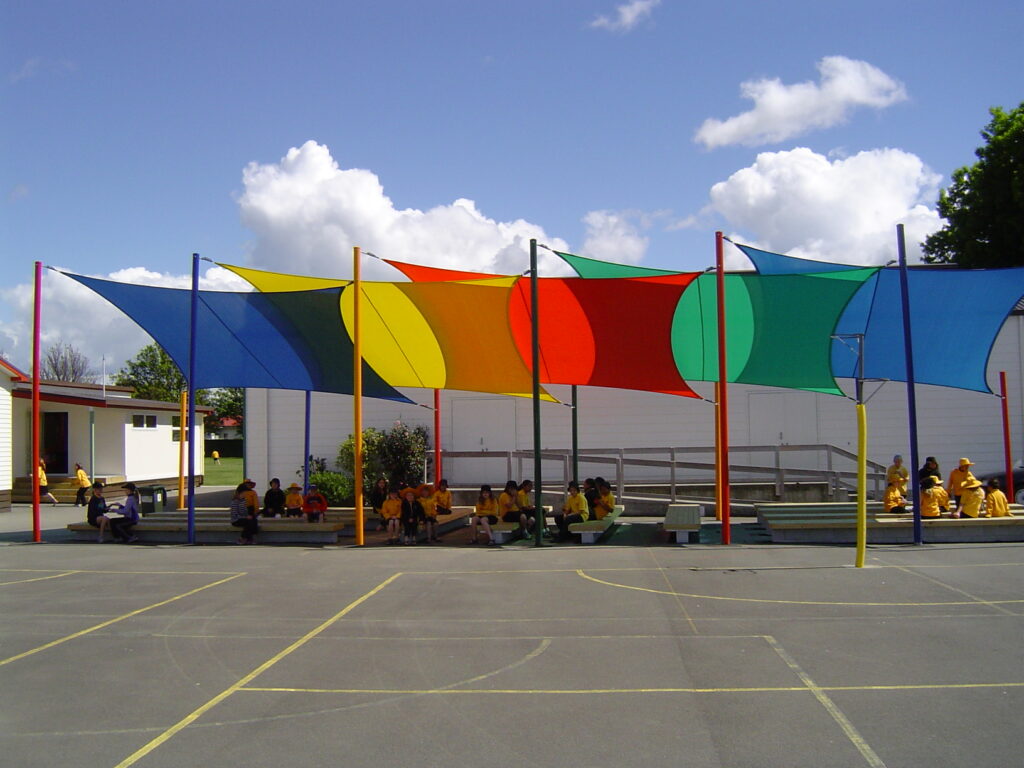
Additional benefits to outdoor learning became starkly evident during the pandemic, when outdoor learning spaces were one way for schools to minimise viral spread, or at least ease COVID anxiety.
Shade structure options for your school
School News surveyed key options by talking to key shade suppliers to schools around the country. They identified two central options proving popular with educators at the moment: Covered Outdoor Learning Areas (COLAs), and outdoor shade sails.
Talking to us more in-depth later on, representatives from Sunshade and Archgola respectively outlined some of their tips and key considerations for schools aiming to invest in on-site shade structures.
Shade sails are a popular, highly customisable option as they can come in a variety of colours and designs; fabric is significant and must offer high UV protection; shade sails suppliers we spoke to recommended independently rated textiles with at least 50 UPF and a UVR block of no less than 90 percent and confirmed that the fabrics must also be strength tested, fire tested, and certified by structural engineers. Shade and screen specialists also offer maintenance scheduling to ensure the structures remain compliant and last longer.
COLAs are a more permanent option and are classically made from steel, although they can be designed, manufactured, and installed using a wide range of materials to suit different needs, spaces and budgets. And they can be beneficial for not only the big, obvious purposes, such as covering a school playground area, but for high foot traffic areas between buildings or classrooms, to create permanently sun-protected pathways across your school site.
One of the challenges in designing COLAs in New Zealand schools is that the space created needs to remain warm year-round—particularly if it is to be used for outdoor learning. Hardy, all-weather materials such as heavy polycarbonate sheeting can provide a permanent COLA or to create temporary outdoor covered space.
Mark Hannan, Hawke’s Bay Licensee for Sunshade told us about some of the best and worst shade structures he has seen in schools:
“Aside from inadequately durable fabrics, probably the worst thing I see in schools is loose shade sails. These can be an accident waiting to happen or at least degrade shades more quickly; another problem arises where the shade sails have not been fixed correctly and could cause damage to property in an extreme weather event. If it’s not attached to something seriously strong, or it is sagging or visibly damaged in places, it’s time for a repair or refit.
Awesome shade sail fit out requests lately have been for playground space designs without centre poles, allowing for uninterrupted play in the space underneath.
“Others use rectangles to cast strong blocks of shade when the sun is at its highest, which also ends up looking really cool. It really depends on the space and the needs of the school, so custom designs are a strong trend.”
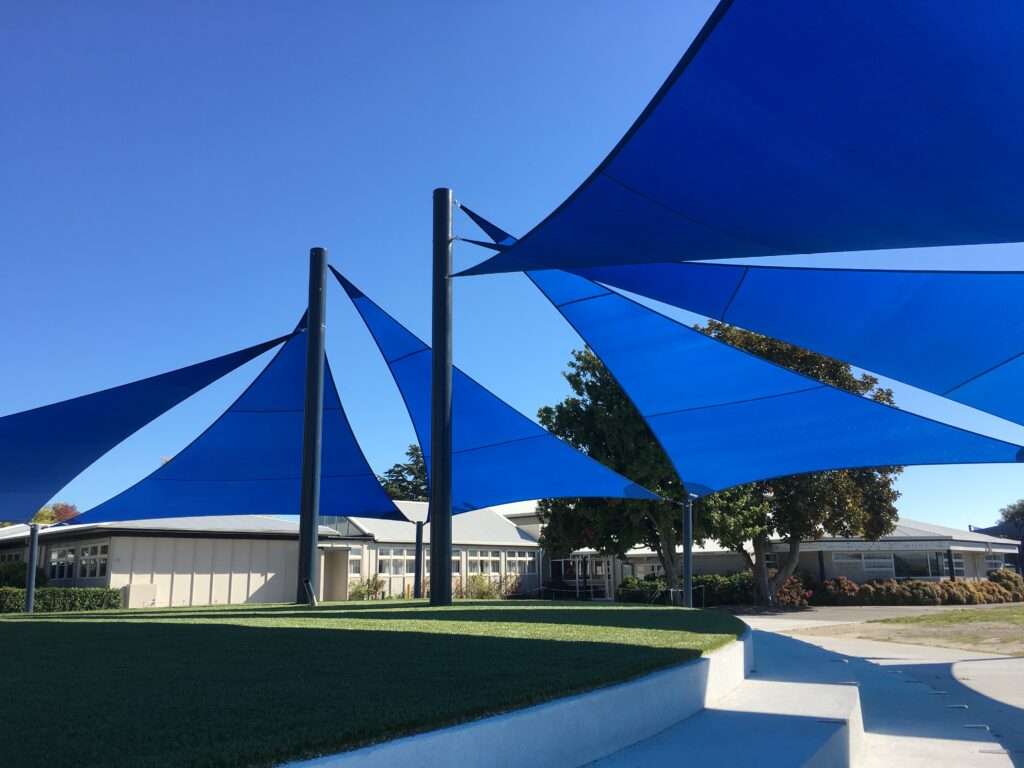
“Shades can be an opportunity to bring the school colours to life too; primary schools tend to choose some fun colours. In areas where graffiti or damage might be a concern, some schools are also opting for more forgiving colours like black and charcoal, and pole pads continue to be a standard requirement for knock prevention too.”
Archgola representative Katrina Evans spoke to us about COLA installation and design as she advised they are fast becoming a must for school environments to increase the usability of spaces.
“The strength of steel framing is that it allows for a wider span between posts, creating fewer obstacles, with the addition benefit of being a sustainable material. Roofing materials need to provide UV protection and be trafficable to meet Ministry of Education requirements.”
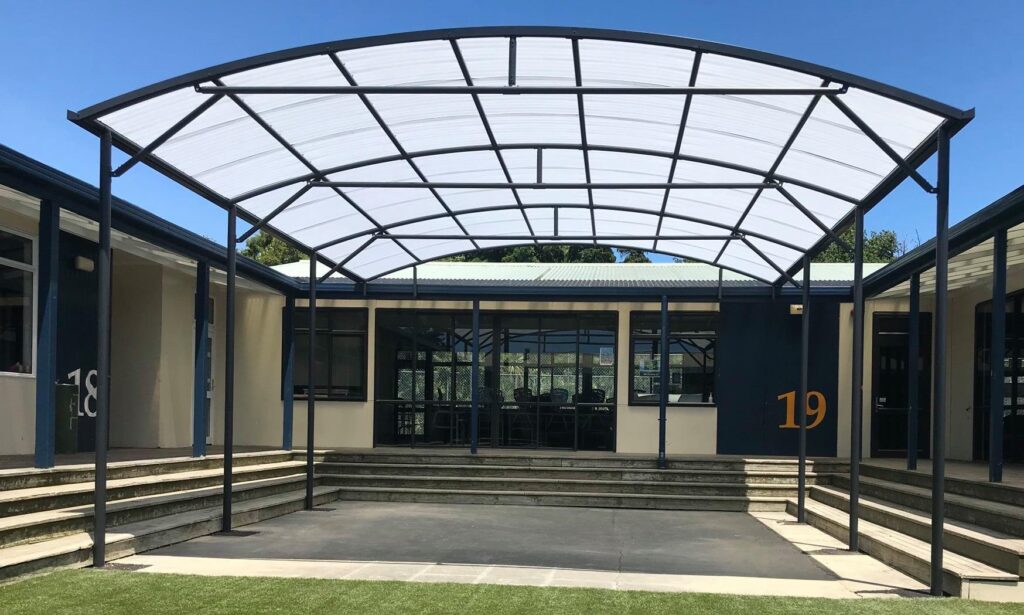
“A good option is Webglas GC roofing, which can be either ice clear or opal, and transmit warmth and natural light. It is strong, highly resistant to chemicals and has low-surface erosion. The top (weather side) is gel coated with a specially formulated high UV resistant resin and provides virtually undiminished performance for 20 years.
“COLAs are a significant investment, so it’s important to partner with a certified company that has experience in the school sector to ensure the finished structure meets the school’s needs, withstands New Zealand’s weather conditions, and provides proven UV protection for the children.
The right design ensures you get great use out of the space, so key things to consider include location (is it warm, sheltered, low light or windy?), opportunities for indoor/outdoor flow, and options like outdoor blinds and side walls.
To get started, chat to other schools and sports clubs about the shelter options they have chosen, then arrange for a consultation to discuss your ideas and options.
“Most schools prefer to have canopies installed in the school holidays, so make sure you allow plenty of time to complete planning and approval process to achieve this.”


